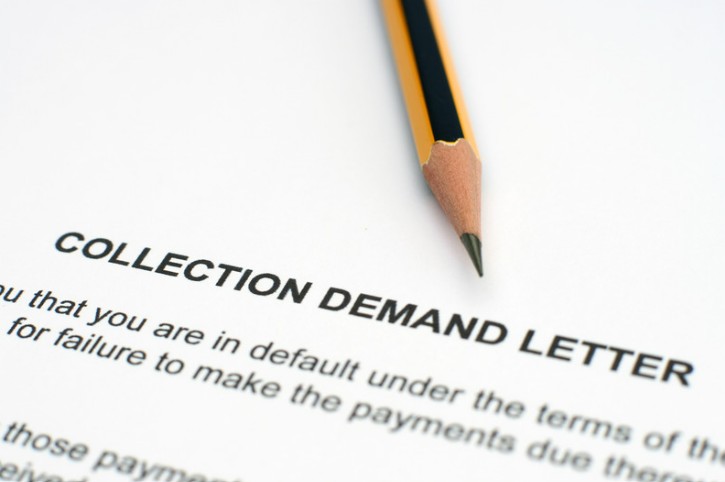
26 Aug What is a Letter of Demand? (And When Should You Send One?)
When regular payment reminders fail to get your client to pay, a letter of demand becomes your next strategic step. This powerful legal document serves as your final warning before you take formal legal action.
If you’ve suffered losses from a contract breach, your most effective option could be a letter of demand. This document clearly outlines your legal claim against the other party and explains what they owe you and why. Letters of demand create a formal record that shows you tried to resolve the issue before going to court. You can also set a specific deadline for the other party to comply with your request.
This piece will help you understand everything about letters of demand, from basic definitions to creating effective structures and next steps if your demand goes unanswered.Dynamic Commercial Collections can provide specialised legal support with your debt recovery process if your letter doesn’t get the results you want.
What is a Letter of Demand and Why It Matters
A letter of demand is a formal written request to collect an unpaid debt after previous collection attempts have failed. This document goes beyond regular payment reminders and shows you’re serious about getting paid.
The first page in the document is the letter of demand, which sits at the top. It immediately shows you mean business. Your letter should clearly state the amount owed, what it’s for, and when you want to be paid. You’ll also want to add a warning that you might take legal action if they don’t pay by the deadline.
This formal notice works in several ways. It gives the debtor one last chance to pay before legal action, which can get pricey. This can encourage them to just pay up in order to stay out of court. If things do go to court, the letter becomes a vital piece of evidence, proving you tried to solve things peacefully.
However, a poorly timed or poorly worded letter can damage business relationships or even prompt the recipient to take legal action. Most businesses send these letters only after all other reasonable collection attempts have failed.
How to Structure an Effective Letter of Demand
A good demand letter needs proper formatting and attention to detail. No legal rules set the exact structure, but you must include several key things.
The letter should go to the right person, either the individual who owes money or the right officer at a company’s registered office. When dealing with businesses, you should send copies to both the registered office and business address.
Your letter must clearly state:
-
- Recipient details – Address it to the individual debtor or the correct officer at a company.
-
- Exact amount owed – Include a precise figure.
-
- Reason for debt – Reference invoices, contracts, or agreements.
-
- Calculation of amount – Show how you arrived at the total.
-
- Previous payment promises – Note any prior commitments.
-
- Deadline for payment – Typically 7–14 days from receipt.
-
- Consequences of non-payment – Legal action, debt collection, or both.
Make sure to include all supporting documents like invoices, contracts, and previous correspondence. Send your letter through a registered postal service to get proof of delivery. This evidence could help if you need to take legal action.
Stay professional but firm in your tone. Don’t use threatening language or emotional statements that could hurt your position if the case goes to court.
A well-written demand letter gives you one last chance to settle payment disputes before legal proceedings start. Courts look favourably at people who try to resolve issues reasonably first, and this document could end up strengthening your case if you need to go to court.
Legal and Compliance Considerations for Letters of Demand
While there’s no single national law dictating how a letter of demand must be written, there are important legal factors to keep in mind to ensure it’s valid and enforceable:
1. Limitation Period
Every debt has a time limit for legal recovery, known as the statute of limitations. In most Australian states and territories, this is 6 years from the date the debt became due (or the date of the last payment). Sending a demand letter after this period may have no legal effect.
2. Serving the Letter Correctly
To make sure the letter is legally recognised:
-
- For individuals: Send to their last known residential address
-
- For companies: Send to the registered office listed with ASIC
-
- Always use registered post or a reputable courier with tracking to obtain proof of delivery
- Always use registered post or a reputable courier with tracking to obtain proof of delivery
In some cases, email can be used if it’s the agreed communication method in your contract, but physical delivery is the safest option for legal purposes.
3. Required Content for Admissibility
A valid letter of demand should:
-
- State the exact amount owed and how it was calculated
-
- Refer to any relevant contracts, agreements, or invoices
-
- Specify a clear payment deadline
-
- Outline the consequences of non-payment, such as legal action or debt collection
- Outline the consequences of non-payment, such as legal action or debt collection
Failure to include these details can weaken your position in court.
4. Avoid Misleading or Unlawful Threats
Debt collection laws prohibit misleading statements or threats of actions you cannot legally take. For example, you cannot claim that someone will be “blacklisted” unless the law permits it in that context. Staying professional and factual is essential to avoid legal repercussions.
By understanding these compliance requirements, you protect your business’s legal standing and strengthen the impact of your letter.
Example Letter of Demand
Here’s a sample template you can adapt for your situation. Keep your tone professional and stick to the facts.
[Your Business Letterhead]
[Date]
To:
[Recipient’s Full Name or Company Name]
[Address]
Subject: Letter of Demand – [Invoice Number / Contract Reference]
Dear [Recipient Name],
I am writing to formally demand payment of the amount of $[Exact Amount], which is now overdue. This amount relates to [brief description – e.g., “services provided under our contract dated DD/MM/YYYY”] and remains unpaid despite previous reminders.
Details of Debt:
-
- Amount owed: $[Exact Amount]
-
- Reason for debt: [Brief explanation]
-
- How calculated: [Short breakdown, e.g., “Invoice 123 – $3,000 + late fees $150”]
Please make payment in full by [Deadline Date – typically 7–14 days from date of letter] to the following account:
[Bank Details / Payment Instructions]
If payment is not received by this date, we may commence legal proceedings or refer the matter to a debt collection agency without further notice. This could result in additional costs being claimed from you.
If you believe there is an error in this claim, please contact me in writing before the due date to discuss.
Yours sincerely,
[Your Name]
[Your Position]
[Your Company Name]
[Contact Details]
Common Mistakes and What to Do If You’re Ignored
Even well-crafted letters can fail to secure payment if they contain common mistakes. Avoid emotional or aggressive language, as it can escalate the situation or damage your credibility in court. Maintain a firm, professional tone from start to finish.
Many demand letters don’t clearly state the exact amount owed or show its calculation. You should be specific; if someone owes you $5,000, list this exact amount and explain how you reached it. The letter’s effectiveness drops when you forget to include a clear deadline, which eliminates any urgency.
What Happens If Your Letter of Demand Goes Unanswered?
A demand letter is an effective tool when payment reminders fall short. This formal document clearly asserts your legal position and gives debtors one final opportunity to settle before legal action is necessary. Understanding how to craft and use these letters is crucial for your business to leverage them effectively.
While a demand letter signals your seriousness, it’s important to maintain a professional tone. Avoid emotional language, clearly outline the exact amount owed, and set a reasonable deadline. These steps not only strengthen your case in court but also improve your chances of recovering the debt without further legal action.
If your demand letter is ignored, the next logical step is to engage a professional debt collection service. With experts like Dynamic Commercial Collections, you benefit from a high success rate and no upfront fees. Their swift resolution timeline, typically within 30-60 days, helps recover your funds while saving you time and effort.
Recover Your Debt Faster with Brisbane’s Trusted Experts
Unpaid debts can disrupt cash flow, strain relationships, and drain your time. At Dynamic Commercial Collections, we specialise in swift, professional debt recovery for Brisbane businesses, with no upfront fees and a proven track record of resolving cases in as little as 30–60 days.
Our team understands Queensland’s legal framework and tailors every strategy to protect your reputation while maximising results. From drafting compliant letters of demand to pursuing recovery through every available channel, we handle the process so you can focus on running your business.
Don’t let overdue accounts linger any longer.
Contact Dynamic Commercial Collections today for a free consultation and take the first step towards getting your money back quickly, legally, and with minimal stress.



Sorry, the comment form is closed at this time.